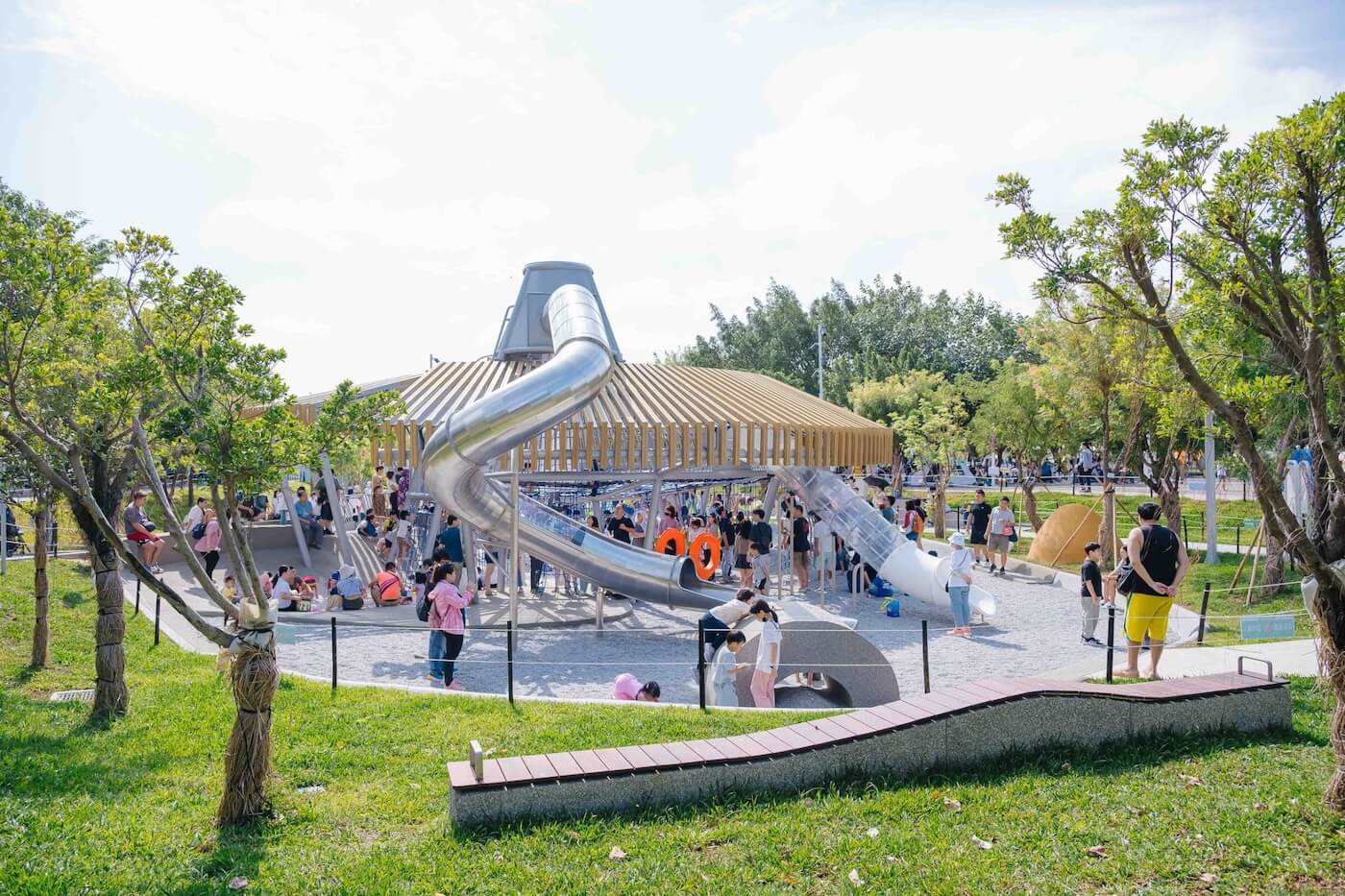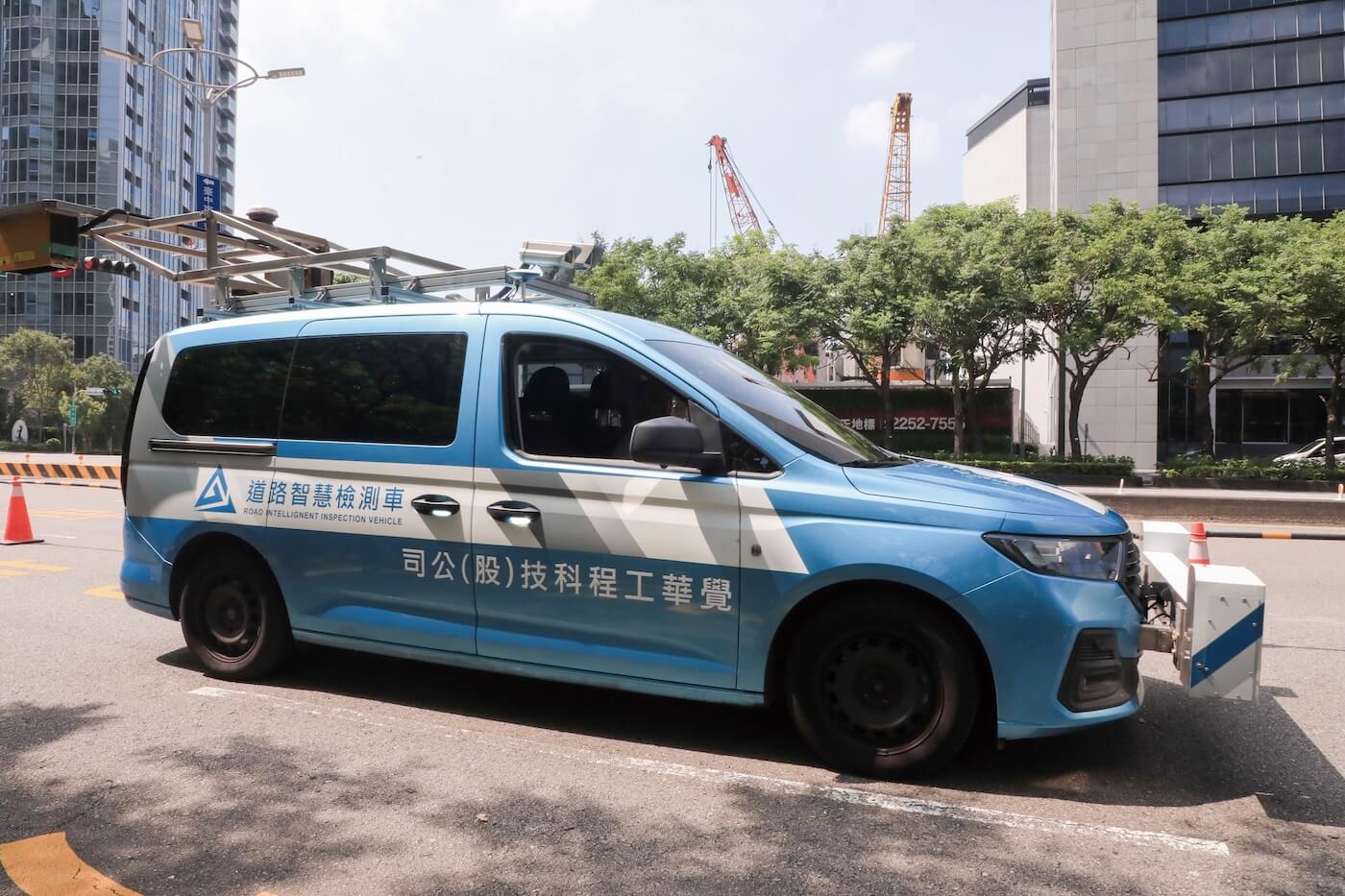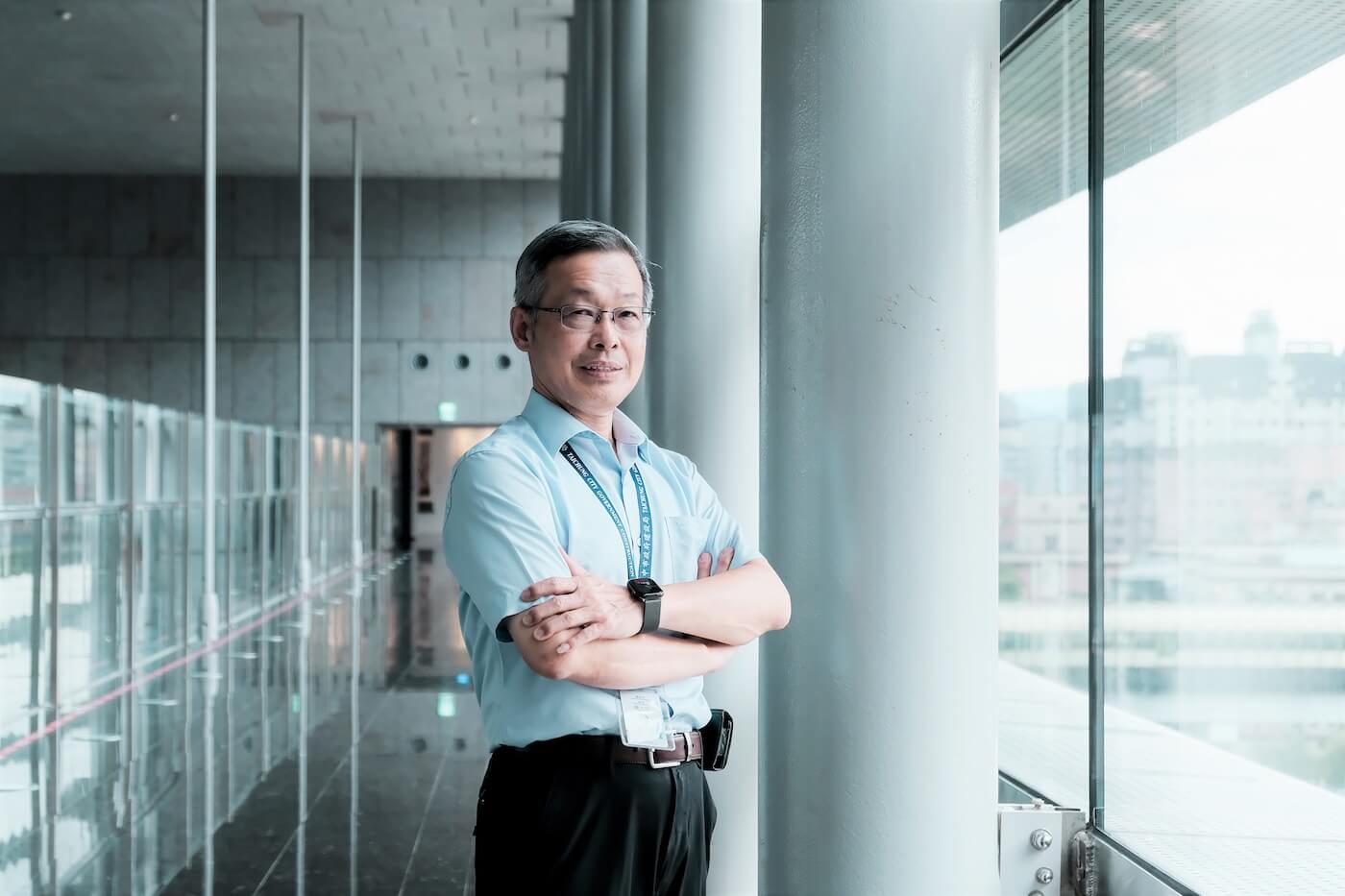從建設出發的智慧與韌性
臺中市建設局以人本、韌性與智慧為核心,從美樂地計畫到智慧工程,打造宜居、安全且永續的智慧城市。
臺中市建設局以「智慧與韌性」為核心,推動城市建設新思維。從「美樂地計畫」公園改造引入公民參與與原創設計,提升空間使用率與歸屬感;同時以交通建設、都市計畫與產業串聯,因應人口移動與城市擴張。基礎工程導入韌性思維,如道路「燙平計畫」、行人庇護島、LED照明及《工程美學手冊》。智慧治理方面,應用大數據、智慧巡檢車、LiDAR與BIM技術,提升決策與效率。臺中建設兼顧功能、永續、生態與國際連結,描繪幸福宜居、智慧城市藍圖。

「看似剛硬的建設,其實本質是為了人民而存在。臺中市建設政策核心緊扣健康、 韌性、美學、友善、宜居、共融、智慧等價值」,臺中市政府建設局局長陳大田強調,不論是大橋、公園還是行政場館的興建,建設的初衷都是回應市民的生活需求。政策的制定並非單向,而是融合「自上而下」的施政方向與「自下而上」的民意反饋,並藉由工作坊、民眾參與等方式,讓民間需求與公部門資源之間達成有效對話。
人本需求,與民共建
以人為本的聆聽,陳局長以「美樂地計畫」為例說明,某次兒童節,家長與孩子在公園高舉布條要求「我們要有好玩的公園」,建設局知情後即刻安排座談會,邀請居民與家長參與討論,發現許多市民對於罐頭遊具的不滿。傳統罐頭遊具設計制式化,且使用壽命不長,往往缺乏創意與挑戰性,無法滿足不同年齡層兒童的需求,導致許多公園逐漸淪為閒置空間。
在彙整社區意見後,市府正式啟動「美樂地計畫」,以「共融、公民參與、原創設計」為核心精神,導入使用者參與機制,邀請在地居民、兒童、專家及設計師共同討論與發想,根據在地需求與特色量身打造,藉由一案一設計,實現符合社區期待的公園空間,也讓市民轉變為「參與者」,為臺中市的公園改造立下重要里程碑,在這樣的參與過程中,也逐步融入數位治理與智慧城市的理念,透過更精準的資料掌握與互動機制,讓民眾意見能以更即時、更有效的方式影響決策,形塑出兼具科技感與人情味的公共空間。


多元城市的建設思維
作為全臺第二大城市,臺中在地人口超過兩百八十萬,加上鄰近縣市每日通勤、就學、觀光等移動人口,實際活動規模突破三百萬人次。這樣的城市特性讓建設不再只是回應單一區塊的發展需求,而是牽涉到跨區調度、產業發展與都市擴張的複合考量。從都市計畫延伸出的中長期策略,交通與產業發展一體兩面,必須同步推進。像是台74線環狀快速道路的延伸工程,不僅銜接國道網絡,也串聯起原本分散的生活圈與就業區,形成完整的城市動線節點。而市政路的貫通,更將精密機械、工業區、科學園區三大產業聚落串聯,強化整體產業鏈的流通與調度效率。

除了交通網絡,臺中也在積極推動以文化與會展為核心的新型都市發展模式,綠美圖與國際會展中心即是具體成果。尤其在氣候變遷日趨嚴峻的時代,建設更須納入極端氣候的預警與因應。在長遠規劃中,也注入智慧城市與 ESG 實踐的視角,讓交通、產業與生活機能的布局,不僅回應當前需求,更能透過AI 技術與大數據分析支持前瞻決策,實現更高效率、更具韌性的城市運行。陳局長舉例,2025年丹娜絲颱風來襲期間,會展中心屋頂一次承受超過1,600噸降雨,卻未造成結構損傷,甚至成功進行雨水回收,成為公共建設導入韌性思維的代表案例。
韌性城市的工程細節
談及城市的韌性建設,陳局長不諱言:「很多工程不一定大,但對市民的影響是長遠而深刻的。」例如臺中近年推動的「燙平計畫」,便是針對道路坑洞、鋪面不平等問題進行例行性、系統性的改善。他用「熨斗燙平衣服」來比喻,形容對道路品質的標準,「不只是修補,而是全面整平」,連接縫隙、重鋪斜率,提升駕駛與行走的舒適度與安全性。該計畫推動至今,已完成超過960公里的道路燙平,等同於繞行臺灣一圈的長度,展現市府對於基礎建設品質的高度要求。

除了道路平整,行人動線與夜間安全也納入人本交通設計的重點。臺中市針對斑馬線(也稱行人穿越線)的劃設進行調整,特別在車道交會匯集處,將斑馬線退縮,以此降低車流干擾與內輪差造成的事故風險,同時增設行人庇護島,保護行人穿越大型路段時的安全。臺中市的路燈亦全面換裝LED節能路燈,可為人行道、巷弄口與轉角區域強化照明亮度,提升夜間通行的清晰度與防範死角的風險,也能在完工後大幅提升節能減碳效率。
在提升工程品質的同時,建設局同時著重於「美」的層面。陳局長認為,美感不應只存在於藝術館與劇場,而應融入日常建設之中。因此建設局編製《工程美學手冊》,從人行道鋪面選材、欄杆樣式到公有建築內部裝修,皆提出具體規範與參考案例,強調「一致性」與「可閱讀性」。同時,藉由智慧政府與數位韌性的概念,將基礎建設的檢測、維護與管理導向更自動化、可預測化的模式,使城市在面對日常挑戰與突發事件時,都能展現穩定、安全且持續優化的服務品質。

智慧建設的全貌
在智慧城市的浪潮下,建設局不僅將科技導入公共工程,也同步強化內部治理系統的數位化。建設局對內建立了一套完整的工程作業制度,包含新進員工訓練手冊、工程流程書與智慧排程系統,協助各項行政與技術工作規格化與效率化。建設局收集來自各工程場域的資料,進行彙整分析,並同步建置大數據整合平台,提高決策依據的即時性與精準度。其中最具指標性的工具,即是建設局研發的智慧螢幕監控系統,能即時顯示降雨強度、水情資訊與施工現場影像,讓局處能在極端氣候或突發事件時,迅速掌握狀況並做出應對。
在實務方面,建設局更實際導入多種先進科技工具進行輔助。包括可用於偵測道路平整度的智慧巡檢車、進行樹木健康掃描的LiDAR(光學雷達)技術,以及整合機電消防設計與施工模擬的BIM(建築資訊模型),這些工具不僅已被導入,還在多起實際建設案例中發揮效果。像是在2024年Red Bull Showrun Taichung活動舉辦前,智慧巡檢車便在市政路進行平整度偵測,結果顯示活動路段已達高速公路等級標準,讓F1賽車得以放心地行駛;LiDAR技術則協助市府定期評估街樹健康狀態,預防可能倒樹的公共危安;而BIM則讓設計團隊在初期就能模擬建物機能配置與系統整合,有效減少未來的維修與拆改成本。此外,建設局也已建立臺中市地下管線的2D與3D資料庫,不僅讓工務單位查詢便利,更降低民間與公部門施工時誤挖風險,顯著提升工程效率與城市韌性。透過這一套「會學習、能預測、會調度」的科技建設機制,建設局不再只是打造硬體設施,更是在打造一個可持續升級的城市建設生態系統。


與未來和國際緊密對話
建設從來不只是當下的工程,更是一種與未來對話的方式。陳局長表示,臺中的建設策略正逐步邁向「生態、永續、人文、國際」的目標。在城市與自然的關係上,市府強調生態補償、廊道串接與原生溪流的保留,避免因道路切割而破壞原生物種棲地,讓建設與環境和諧共生。
在全球化與智慧城市趨勢下,臺中的公共建設也朝向「可觀、可用、可感」的方向邁進。從F1 賽車展現城市道路品質,到國際會展中心呈現空間規模與工程韌性,皆是臺中走向世界級城市的具體實踐。陳局長強調:「我們不是只在治理城市,而是在設計一種讓人想留下來的生活方式。」這份信念,是臺中從幸福宜居邁向智慧城市的重要起點。

Wisdom and Resilience Through Construction
“Beneath the seemingly rigid face of construction lies a purpose that exists for the people,” emphasized the Director of the Construction Bureau - Chen Da-Tian . Whether bridges, parks, or civic buildings, the essence of construction is to meet citizen needs. Policies are shaped through both top-down governance and bottom-up feedback, with workshops and public participation enabling meaningful dialogue between communities and government.
Building with People at the Core
The Taichung Melody Project exemplifies citizen-driven change. Sparked by parents and children demanding better playgrounds, the city launched an initiative rooted in inclusiveness, participation, and original design. Residents, children, experts, and designers co-created park spaces tailored to local needs. This approach not only redefined public spaces but also turned citizens into active participants. By integrating digital governance and smart city tools, feedback could influence decisions more directly, shaping spaces that balance technology with human warmth.
Multi-Dimensional Urban Development
Taichung City, home to 2.8 million residents and over 300,000 daily commuters and visitors, requires construction strategies that span transportation, industry, and metropolitan growth.
The extension of Provincial Highway 74 connects the freeway network and integrates fragmented residential and employment zones. Shizheng Road links three major industrial clusters—precision machinery, industrial parks, and the science park—strengthening logistics and competitiveness.
Beyond transport, Taichung City is investing in cultural and convention hubs such as the Taichung Green Museumbrary and the Taichung International Convention and Exhibition Center. Construction now incorporates resilience against extreme weather, supported by AI technology and big data analysis for forward-looking decisions. For example, during Typhoon Danas the Convention and Exhibition Center’s roof withstood over 1,600 tons of rainfall without damage, even enabling rainwater collection—an emblem of resilient public works.
Resilient Engineering for Daily Life
Not all projects are large, but many deeply impact citizens. The Road Leveling Project systematically addresses potholes and uneven pavement, “ironing” streets smooth for safer travel. Over 960 kilometers of roads have been resurfaced—equivalent to circling Taiwan once.
Pedestrian safety is also prioritized. Crosswalks are set back from intersections, pedestrian refuges added, and LED streetlights installed to improve visibility and cut carbon emissions.
Aesthetics form another dimension. The Construction Bureau published an Engineering Aesthetics Manual to guide design elements from sidewalks to public buildings, stressing harmony and readability. Meanwhile, digital governance tools bring automation and predictive management to infrastructure maintenance, ensuring stable and safe service.
A Smarter Construction Vision
The Construction Bureau is digitizing both projects and internal systems. Training manuals, process documents, and smart scheduling standardize and streamline workflows. Field data is collected into a big data platform, improving decision-making accuracy.
The Smart Monitoring System displays rainfall, water conditions, and live construction footage, enabling rapid response during emergencies. Advanced tools such as smart inspection vehicles, LiDAR for tree health scanning, and BIM (Building Information Modeling) for design simulation have been applied in practice. Before the 2024 Red Bull Showrun Taichung, inspection vehicles confirmed road conditions met highway-grade smoothness for Formula 1 racing. LiDAR aids urban tree management, while BIM reduces long-term maintenance costs.
Taichung City has also built 2D and 3D underground pipeline databases, minimizing accidental damage and boosting efficiency. This evolving system of “learning, predicting, and coordinating” demonstrates how construction today builds not only structures but a sustainable ecosystem.
Dialogue with the Future and the World
Construction is not just about the present but a dialogue with the future. Taichung City Government’s strategy is guided by ecology, sustainability, culture, and internationalization. Ecological measures include habitat compensation, ecological corridors, and preservation of streams to ensure harmony with nature.
In line with global smart city trends, Taichung City’s projects aim for visibility, usability, and experience. From Formula 1 races highlighting road quality to the scale of the Taichung International Convention and Exhibition Center, the city is building toward world-class stature.
“We are not merely managing a city—we are designing a lifestyle people will want to stay for,” affirmed the Director Chen. This vision marks Taichung City’s transformation from a livable city to a truly smart city.
文章參考ChatGPT翻譯|Translation assisted by ChatGPT.